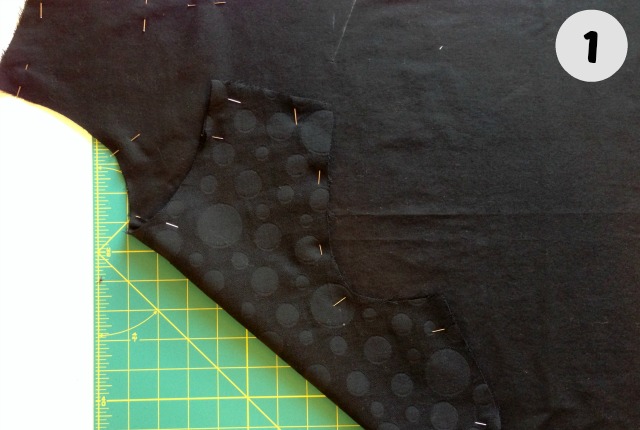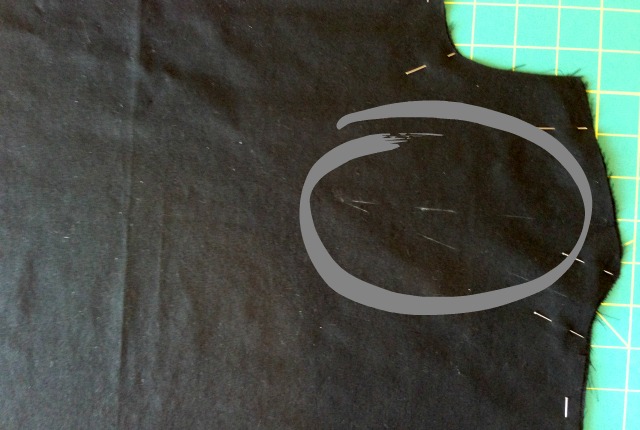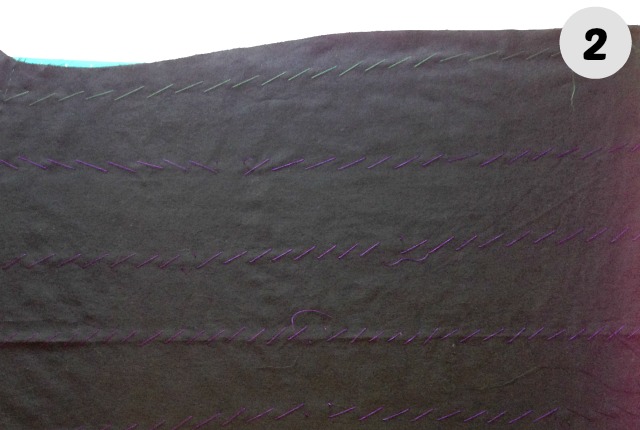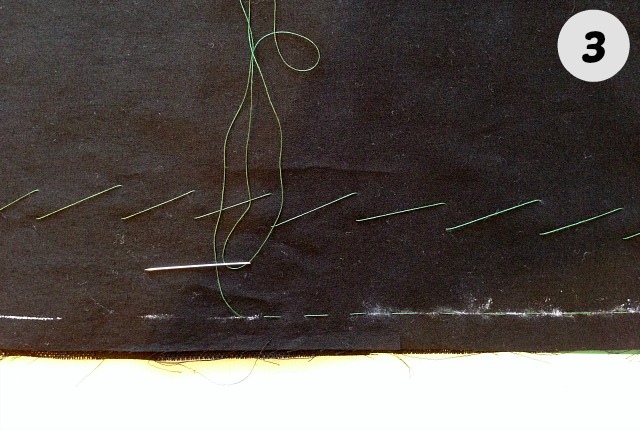Why underline a garment? While lining is sewn as a separate garment and then attached to the fashion garment underlining is basted to the fashion fabric before construction. This method adds body and durability to the garment when the style demands more structure or the fabric needs support due to a loose weave. Underlining can add opaqueness to the entire garment or just certain areas if the fashion fabric is sheer or partially transparent.
Many fabrics can be used for underlining including batiste, China silk, organdy and muslin. The underlining should be compatible to the fashion fabric in how it is cared for. It should be lighter in weight and as soft as the fashion fabric. Too stiff or heavy and it will affect the appearance of the final garment (in a bad way). When choosing underling test how the fabrics work together by draping them, one on top of the other, over your hand.
To underline a garment begin by cutting out the pattern pieces from the underlining fabric as well as the fashion fabric (Separately, in order to keep everything on grain. Layering up fabrics can lead to shifting). Transfer all pattern markings to the underlining and not the fashion fabric. Since fabrics with a loose weave are frequently underlined this is extremely practical as loosely woven fabrics do not show markings well.

Place the underlining piece over its matching fashion fabric piece – wrong sides together. Line up all edges as best as you can and pin together around the edges.

Starting in the center of the two layered pieces, diagonal baste the underlining to the fashion fabric in vertical rows, about three inches apart running lengthwise. It is important to keep smoothing out the fabrics so there are no puckers or wrinkles. You may need to remove some pins in order to keep the two layers smooth. Because the underlining and the fashion fabric will be sewn as one any distortion in grain direction or any mismatching between the two layers will show in the finished garment.

Baste with a running stitch along the edges in the seam allowance but close to the seam line. (If you have 5/8” seam allowances try to baste ½” in from the edge). If any pins remain after basting they can be removed. For darts also baste on the fold line (not dart legs) of each dart extending about two inches beyond the dart point.

When all pieces are attached to their corresponding underlining piece you begin to sew the garment together as if it is a single layer of fabric.
Since underlining will leave seam allowances exposed use a Hong Kong finish to finish the seam allowances as you sew the garment together. Even if not seen (like in a skirt) a Hong Kong finish will keep the seam allowance of the loosely woven fashion fabric from unraveling which loosely woven fabrics are so apt to do.
After the garment is complete the basting can be removed.
A note about basting: It is generally recommended to use a contrasting thread when basting for easier removal afterwards. It is also recommended to not press your garment with the basting threads still in it. When you underline a garment you will be pressing with basting stitches in. No getting around that. If you are using a very fine fabric silk thread is recommended for basting when pressing will be done. My biggest advice is to be careful about which color thread you choose for basting since thread will leave little fibers behind. Basically you would not want to use red basting thread on a white fashion fabric, or black for that matter. Therefore I generally use matching all-purpose thread for basting. Any fibers left behind blend right in. (I have never used silk thread but based on the properties of silk I guess it does not shed fibers).

I have been sewing a long time and this is the first I’ve heard of “underlining.” THANK YOU for the brilliant article! My mind is already swirling with projects this method will greatly enhance.